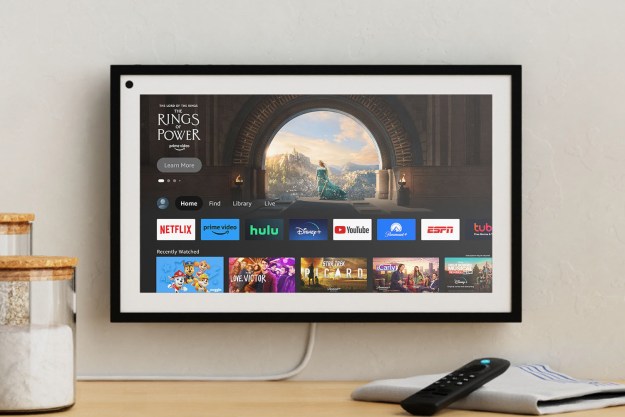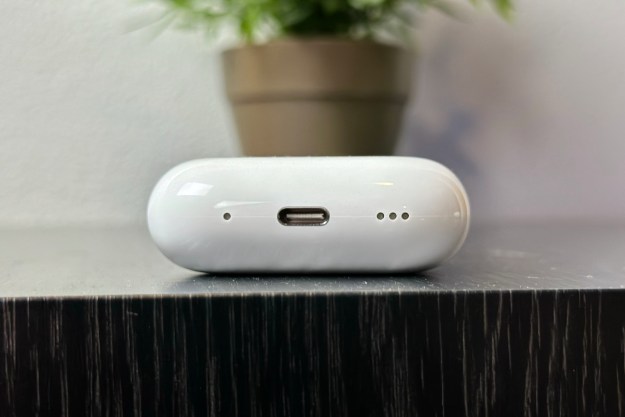Google and Apple have two very similar services for beaming media from your mobile device over to your TV for a shared experience. Google uses Chromecast with its Google Cast streaming technology, and Apple uses AirPlay 2 to do the same.
So, if you like switching content from your phone to your TV whenever you want, you’ve got a choice to make — and we’re here to make that choice easier. Let’s take a look at the ins and outs of Chromecast and AirPlay 2, and which may be a better fit for you.

Mobile device compatibility
If you want to use one of these content sharing protocols, then it’s going to need to be compatible with your mobile device — and compatibility is indeed the core difference between Chromecast abilities and AirPlay 2.
Chromecast has been around for years and Google has worked to implement it on a wide variety of platforms, so compatibility shouldn’t be a concern. It works on Android devices of all kinds, as well as iPhones, iPads, and anything with a Chrome browser, like a Chromebook. It’s also compatible with the most-used apps such as Netflix, Spotify, Hulu, YouTube, and Pandora.
As you would expect, AirPlay 2 started out focused only on Apple devices, and while Apple has been working to change that for the past couple of years, it’s still easy to see that AirPlay is a bit more limited. Android mobile devices don’t have much support, so an iOS device is generally required. However, third-party support is more limited as well: Spotify is getting
Winner: Chromecast
Built-in or separate?
Another big question users have: Do you need a separate device, like a set-top box connected to your TV, to use Chromecast or AirPlay 2? Buying a separate device is a big ask for many users, so let’s break this down.
Chromecast and AirPlay 2 do exist on specific set-top devices that can connect to your TV. The Chromecast dongles using the Android TV or the Google TV platform are common examples, but Chromecast also works on many A/V receivers and other devices. The latest entries in the Apple TV line, like the 2021 Apple TV 4k, likewise support
However, both Chromecast and AirPlay 2 are being increasingly built into many TVs nowadays. If you are buying a new TV, you can look for “Chromecast Built-in” or “AirPlay 2” to see if they come with included support — a wide range of brands do this now, including Sony, Sharp, Philips, Vizio, Toshiba, and Soniq.
Winner: A tie

Ease of use
Both services are very easy to use and generally intuitive, especially after you complete the initial setup and pairing processes. A few minutes of practice, and you can quickly learn how to use either option. Once streaming, both services also have options for controlling volume and playback directly from your phone, turning it into your own smart controller.
Winner: A tie
Audio/Video quality
Chromecast supports both multiroom audio and up to 24-bit/96Hz audio streams, something AirPlay 2 just can’t compete with using its 15/44.1 audio streams. If you enjoy dense audio files that are more packed with sound data than average, you’ll certainly want to go for Chromecast at this time.
When it comes to mirroring video, both Chromecast and AirPlay 2 are limited to 1080p resolution and up to 60fps. Apple’s descriptions may sometimes make
Winner: Chromecast
Voice Assistant compatibility
This is primarily a Siri vs. Google Assistant debate, so it probably depends on what voice assistant you feel more comfortable with. However, we will point out that Siri’s support for any paired smart speakers are limited to the Apple HomePod, while Google Assistant support includes both Nest speakers and a variety of smart speakers from brands like Sony and Onkyo.
Winner: Chromecast

The costs involved
Let’s assume you don’t have a TV that has AirPlay 2 or Chromecast built-in. What sort of prices are you looking at to add the capability to your current home theater setup? Here again, Chromecast comes out on top: You can find a third-gen Chromecast dongle for $30 and you’re good to go as long as you’ve got a spare port on your TV. But the cheapest Apple TV with
Winner: Chromecast
Bottom line: Pick Chromecast
Most users will choose simply based on whether they have an Android or iPhone. But if that’s not your primary concern, then Chromecast wins out in pretty much every other metric, making this an easy recommendation.
Editors' Recommendations
- Best AirPods Pro deals: Get Apple’s flagship earbuds for $122
- AirPods 4: Everything we know about Apple’s next wireless earbuds
- Best streaming devices for 2024: Apple TV, Roku, Fire TV, and more
- Best Apple AirPods alternatives for 2024: Bose, Sony, Marshall, and more
- SharePlay is coming to Apple TV and HomePod




